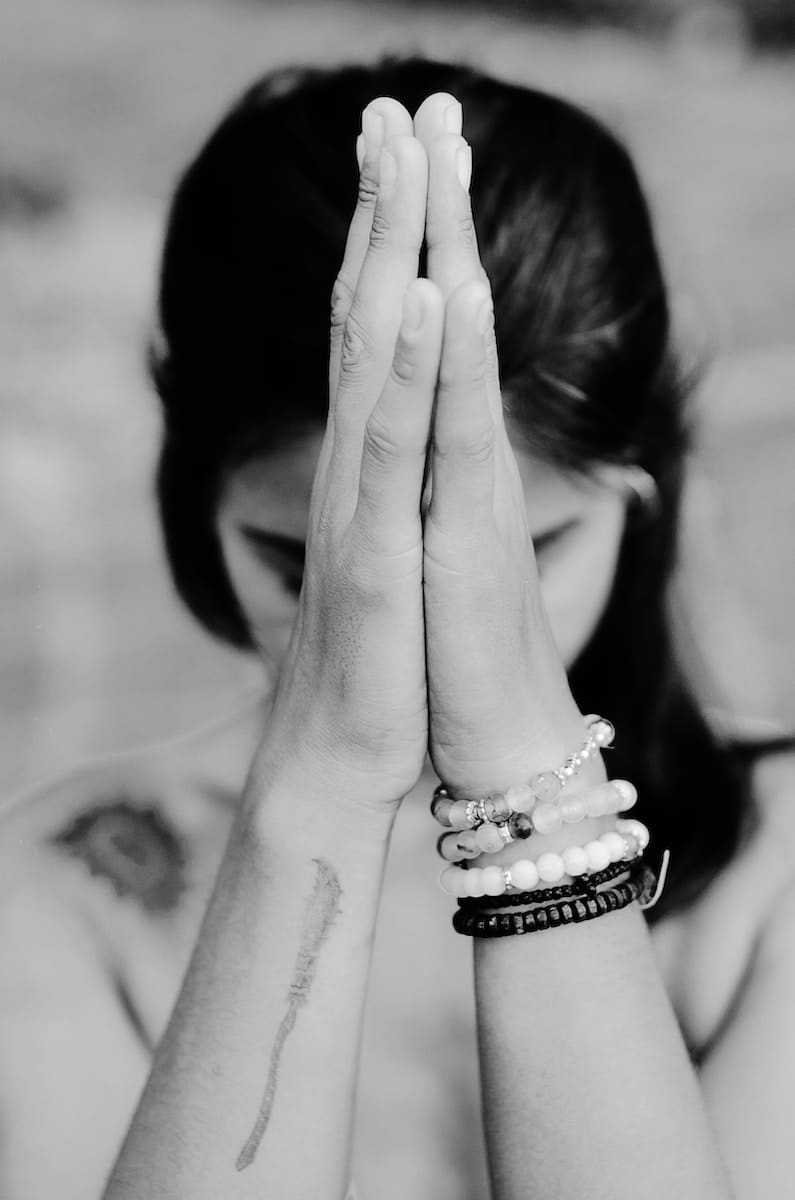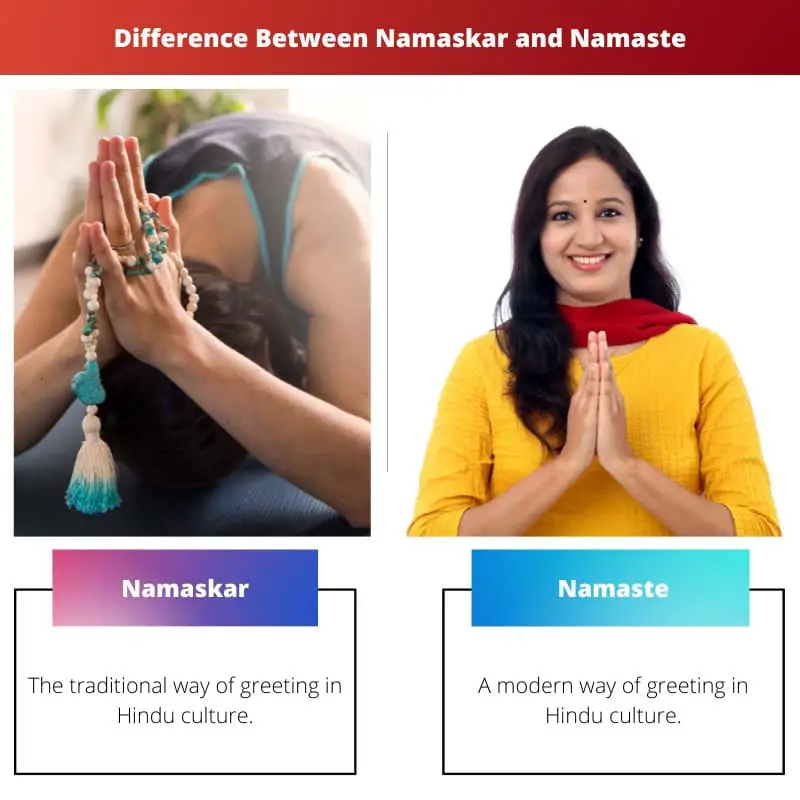People greet each other in many ways. When it comes to greeting, we use ‘Hi’, ‘Hello’, ‘Hey but in Indian culture, we use ‘Namaskar’ and ‘Namaste’.
These two words are used to greet any person and used in countries like India, Nepal, Bangladesh. Today, we will discuss the difference between these two words.
Key Takeaways
- Namaskar is a greeting used in India, while Namaste is used in Nepal and India.
- Namaskar involves a slight bow with the palms pressed together, while Namaste involves a more formal bow with the hands at the forehead or chest.
- Namaskar is considered more respectful than Namaste in some parts of India.
Namaskar vs Namaste
Namaste is a commonly used formal type of greeting in India that is considered to be a sign of respect and education and is accompanied by a slight bow. Namaskar is a more casual type of greeting that is more used between close friends and acquaintances in Indian culture.

Namaskar is a way of greeting people by joining both hands upright in front of the chest. It is an Indian way of greeting people with respect.
The word namaskar has been obtained from the Sanskrit language and has a intense meaning. When we break the word namaskar, we get “namas” and “kar”, the word “namas” meaning in Sanskrit “to bow down”.
Namaste is an Indian way of greeting anyone. It could be elders, children, adults, etc.
This word has been derived from the Sanskrit language and has profound meaning and tradition. The word “namaste” when broken down, we get “Namah” and “te”, “Namah” meaning bowing down, and “te” meaning to you.
Comparison Table
| Parameters of Comparison | Namaskar | Namaste |
|---|---|---|
| Definition | The traditional way of greeting in Hindu culture | A modern way of greeting in Hindu culture |
| Gesture | Done by joining the palms in front of the chest and sometimes bowing down to touch feet | Done by joining the palms |
| Origin | Derived from Sanskrit word meaning to bow down in respect to the divine energy | Derived from Sanskrit word meaning to greet in respect to the other person |
| Usage | Used only for the elder people and the deities | Used by everyone including young people and kids |
| Culture | To greet people with respect | To greet people casually |
What is Namaskar?
It is a way of addressing people by clasping both hands upright in front of the chest. Eventually, Western people greet by shaking hands and saying hi/hello.
It is an Indian way of addressing people with respect. The word namaskar has been derived from the Sanskrit language and has a profound meaning.
When we break the word, namaskar, we get “namas” and “kar”, the word “namas” meaning in Sanskrit “to bow down” and “kar” which has been derived from the word “Kri”, meaning, “to do”, the word collectively mean, “I do the act of saluting to you with great respect.”
In Namaskar, one doesn’t refer to the individual but the supreme consciousness within one. It is used for billions of years now. Even the gods and the deities used this gesture to greet each other.
This is used in the continental regions around Nepal, Bangladesh, India. This term is mainly used for the elder people and not by the younger people.
In Hindu culture, people use hands as the primary source of creation, so when one greets other Namaskar, they are grateful to God for creating this lovely individual in from of them.
It is the most traditional form of performing salutation used by people who stick to their roots.

What is Namaste?
It is an Indian way of hailing people. It’s done by clasping both hands together in front of the heart.
This word has been depicted from the Sanskrit language and has deep meaning and tradition. The word “namaste” when broken down, we get “Namah’ and “te”, “Namah” meaning bowing down, and “te” meaning to you.
The collective meaning of the word as I now down to you in great respect. The word namaste is not used to greet people but it is used as a gesture to bow down to a divine entity.
In yoga, it is used to greet the divine energy and not people. It is used by the people to show respect to one another and there’s no age barrier in using this gesture, the younger can use it too.
It is the modern way of welcoming people, and one doesn’t need to bow down to the other. The gesture of folding hands during namaste is known as the Anjali mudra.
It is a non-verbal form of greeting, while the namaste can be done even without joining hands by saying verbally.
Now let’s talk about a few unknown benefits of saying namaste, when one joins both the palms to say namaste, the touching of palms activates the nerve endings and releases hormones that calm and soothe one and releases the negativity from one.

Main Difference Between Namaskar and Namaste
- Namaskar is the traditional way of welcoming in Hindu culture, and Namaste is the modern way of addressing in Hindu Culture.
- Namaskar is performed joining the palms in front of the chest and sometimes bowing down to touch feet, and Namaste is performed the same way as a token of appreciation.
- Namaskar is attained from Sanskrit word meaning to bow down in respect to the divine energy, while Namaste is attained from Sanskrit word meaning to greet in respect to the other person.
- Namaskar is used only for the elder people, higher authorities etc while Namaste is used by everyone including young people too.
- In Hindu culture, Indians use Namaskar to wleocme people with respect, and Namaste is used to address people casually, replacing the word ‘Hello.






